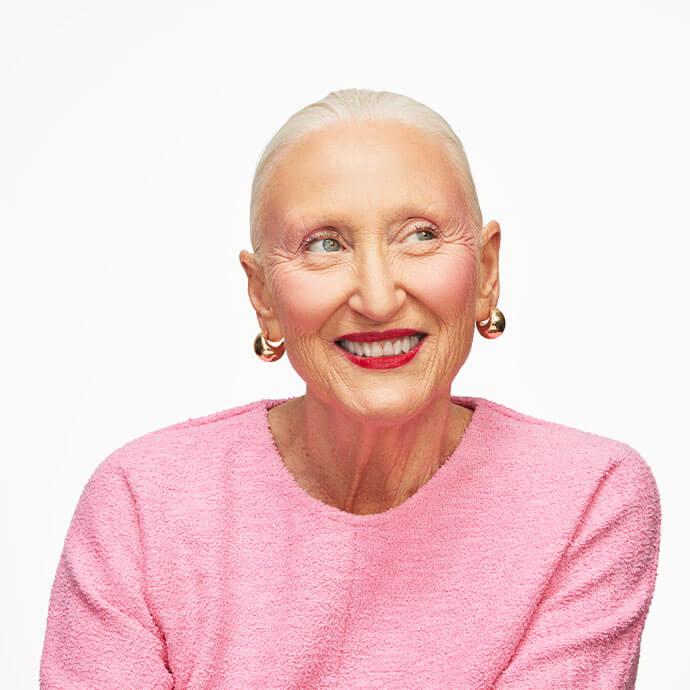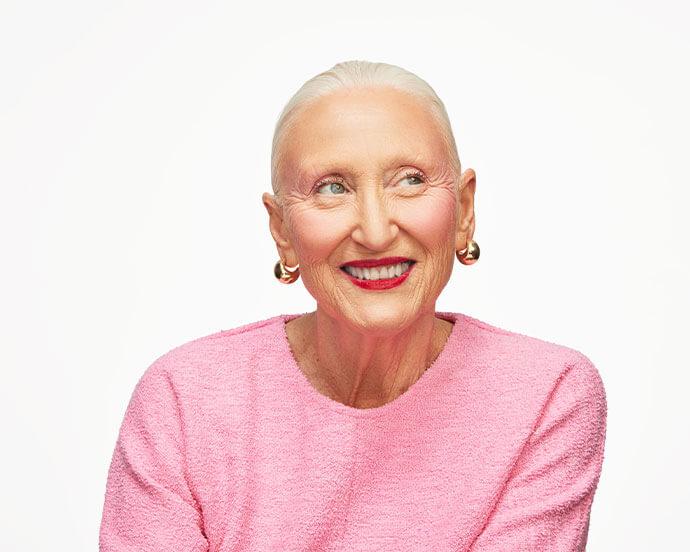The Dark Skin-Hyperpigmentation Struggle Is Real: Here’s How I Achieved Clear Skin



Kindra Moné


From harsh, acidic cleansers I should’ve left alone to DIY masks and at-home extractions (please, don’t try that at home)—I’ve probably tried it all on my quest to clearer skin. I’ve experienced what felt like embarrassing breakouts for months on end in which I wouldn’t dare leave the house without makeup on, but I’m happy to report that, lately, wearing concealer feels like an added boost to my look rather than a reluctant obligation. These days, it’s not a rarity for a friend on social media to ask me to drop my skincare routine or for a follower to comment on my newfound glow, but this was not always my story.
Trust me, I know the struggle of hyperpigmentation and unwanted breakouts. So what took me from dark spots and blemishes to clear skin? It was definitely a journey. There’s no one-size-fits-all approach to skincare, but I’m happy to share what worked for me. I also chatted with board-certified dermatologist Caroline Robinson, MD, to share some facts that can hopefully help you on your journey as well.
“Hyperpigmentation can be caused by many factors including sun exposure, rashes, acne, and hormonal shifts,” says Dr. Robinson. “For individuals with darker skin tones, excess pigment production leading to hyperpigmentation can occur quite easily because of the higher concentration of melanin within the skin.”


It's about glam time you treated yourself.
MEET THE EXPERT
Caroline Robinson, MD, is a board-certified, Chicago-based dermatologist and the founder of Tone Dermatology, specializing in general, medical, and surgical dermatology.
My Acne Struggle
My first severe bout of acne came in college when I decided that a stronger birth control would be my quick fix to getting larger breasts. You guessed it—it was not! It’s laughable now, but it was a major fail that I would never recommend. All I was left with was hormonal acne and my same old B cup after months of denying that the influx of hormones was damaging my skin. In response to my new breakouts, I constantly picked at my skin and used very harsh cleansers to wash my face several times a day. Little did I know that between my picking and over-washing, I was ruining my skin’s protective barrier—leaving it exposed to pollution and bacteria. Basically, it was a recipe for scarring and continued breakouts, especially in my dark skin.
Over time, I ditched the birth control and switched to a more gentle cleanser, which left my skin okay, but I wouldn’t say it was thriving. I was still covering up acne scars from previous breakouts (a.k.a. the dreaded post-inflammatory hyperpigmentation), and I was still removing my makeup with just a wipe before calling it a night.
My attachment to makeup allowed me to struggle with acne and hyperpigmentation virtually unnoticed in photos, but one evening with a friend changed my mindset for the better. After a night out, she returned home saying, “I can’t wait to take my makeup off. I love my face without makeup.” I could not relate. I hated my skin without makeup, and I realized that maybe my focus had been all wrong. That night I decided to prioritize skincare over my beloved makeup, and that’s where my journey to clear skin began.
Finding Clear Skin
It was time for a different skincare approach. Instead of trying to scrub away my acne with a harsh cleanser, I began to treat my skin to what it needed most: nutrients. My first purchase was a dark spot corrector. With consistent use, it started to even my skin tone and fade those dark marks that are so common in brown skin. I found myself slowly being able to back away from the foundation. While it definitely treated the dark spots I already had, I was still experiencing new breakouts and knew that my skin needed more attention.
Rather than reaching for whatever cleanser was trending at the moment, I decided to do my research to find a formula that targeted my specific needs. I landed on the URBAN SKIN RX Even Tone Cleansing Bar. I started to fully remove my makeup each night before cleansing, then I followed with a nourishing nighttime routine. This daily ritual started to become an act of self love, and as cheesy as it sounds, my skin slowly but surely started to love me back.
Both of these products worked great for me, but it’s important to remember that everyone’s skin is different. Dr Robinson says: “The biggest myth about fading dark spots is that there is one thing or one product you need to use to do it. Dark spots and hyperpigmentation often only improve with strict sun protection and use of multiple pigment correcting ingredients within one or multiple products. Procedures are also something not discussed enough; chemical peels, microneedling, and laser surgery are things that can improve pigment faster when combined with the right skin routine to support.” (Important to note: The treatments above are better left to professionals.)
Once my complexion was mostly under control, it became time to look at my habits and their correlation to my skin a bit more closely. Turns out, there are other factors besides the color of your skin that can contribute to hyperpigmentation. I started to notice that when I consumed large amounts of dairy, I was basically asking for a pimple, and that my sugar binges or nights of drinking would show up on my cheeks and chin the next day. Better skincare habits combined with a diet of good-for-your-skin foods have made all of the difference for me. The more colorful my plate is—think carrots, leafy greens, tomatoes, and healthy fats, like those found in fish or avocado—the better my skin looks. Our skin is our largest organ, and it often reflects what’s going on inside of us.
Lastly, I can confidently say that everything you’ve heard about the importance of daily SPF is true. This step has made all of the difference in clearing up and preventing hyperpigmentation on dark skin. I will live and die by the importance of sunscreen. There’s such a visible difference in my skin now that I don’t leave the house without SPF that it will forever be a part of my routine.
Like most skincare experts, Dr. Robinson stands by the importance of sunscreen: “Most forms of hyperpigmentation are caused by excess production of melanin, and something we need better education on within the community is that UV light stimulates melanocytes (our pigment-producing cells) to make more pigment. Understanding this fact makes it easier to appreciate why sunscreen should be our first line of defense against hyperpigmentation.”
My current clear-skin routine:
Now that my skin has made it through the problematic zone (I still encounter the occasional breakout, FYI), my main concern is making sure that it stays healthy for the long haul. That means cleansing, treating, and protecting every single day. Some people prefer a 10-step routine, but in order for me to stick to it, my approach is a bit more simple: two steps on my lazy days (cleanse, moisturize, and hit the hay!) and four steps on my best days. Here’s what that looks like:
1. Cleanse
“A basic skincare routine starts with the right cleanser for your skin type, morning and night,” says Dr. Robinson. “Your cleanser should be gentle, non-stripping, and formulated to your skin type.” My new routine is right in line with her expert advice. For example, I used to use harsh products meant to target acne, but they were too rough for my dry to normal skin. Now I use a pH-balancing cleanser that soothes as it removes impurities.
2. Tone
A good toner ensures that your skin is, in fact, clean by getting rid of any dirt or debris left over after cleansing. A toner can also minimize the appearance of pores and balance your skin by keeping oil in check—making your skin a clean canvas for your next step.
3. Treat
After cleansing, it’s time to treat with a serum. Think of your serum like taking vitamins that are specific to your unique skin goals. “Adding a topical antioxidant, like vitamin C in the morning, can be helpful for brightening and repairing skin damage over time,” says Dr. Robinson. “At night, a treatment serum, such as a topical retinol, can be used followed by a moisturizer to help with the signs of skin aging including laxity, fine lines, and discoloration...If hyperpigmentation is a concern, topical brighteners like alpha hydroxy acids and those that even tone like azelaic acid, kojic acid, niacinamide, etc. are excellent places to start.”
4. Nourish
Finally, I lock in moisture with a non-comedogenic face cream (yes, even oily skin needs a moisturizer). In the summer, this looks like a lightweight aloe gel moisturizer, while I use a thicker, creamier moisturizer in cooler months. For my day routine, I always, always follow with SPF and my skin surely thanks me for it. At night, I use a more treatment-focused cream.
The best thing I could’ve done for my skin was to stop picking, stop stressing, and start protecting it more thoughtfully. Minimizing stress, eating for nutrients, and sticking to my routine has done wonders for my complexion. While my skin’s needs will surely change over time, I’ll be right here—paying attention to what my body needs and treating it with care and patience. Clear skin isn’t formed overnight, and if you’ve done all you can on your own, don’t hesitate to see a dermatologist like Dr. Robinson who can help you create a plan of action right for you.
Want more Beauty Through the Black Lens? Learn about dermatologist Adeline Kikam's (a.k.a. @brownskinderm) strive for wellness in skin of color, see how Ndeye Peinda is breaking the stereotypical beauty mold, and hear from makeup artist Renée Loiz about her work to diversify your beauty cabinet.
Feeling inspired by Kindra’s love for skincare, and want to experiment with your own routine? Take our Beauty Quiz now to get started with your very own IPSY Glam Bag. Already an Ipster? Refer your friends to earn points, which you can use toward products. Either way, don’t forget to check us out on Instagram and Twitter @IPSY.
Liked this post? Share!
Related Stories


Skin
How to Adjust Your Skincare Routine for Mature Skin in the Winter
Published on Dec 4, 2025 • 7 min read


Skin
Meet the Best Moisturizers for Winter, According to Dermatologists
Published on Dec 1, 2025 • 9 min read


Skin
What Is Inflammaging—and Why Everyone’s Talking About It
Published on Dec 1, 2025 • 8 min read


Skin
6 Skincare Trends to Have on Your Radar in 2026, According to Experts
Published on Dec 1, 2025 • 7 min read


Skin
We Grabbed Our Crystal Ball and Found These 6 Skincare Predictions for 2025
Published on Dec 10, 2024 • 7 min read


Skin
Simple Self-Care Tips That Actually Make a Difference
Published on Nov 13, 2025 • 12 min read


Skin
These 9 Face Scrubs Will Unlock Soft and Smooth Skin on Contact
Published on Nov 5, 2025 • 10 min read


Skin
10 Thanksgiving Foods That Will Have Your Skin Coming Back for Seconds
Published on Oct 15, 2025 • 7 min read


Beauty Picked Just for You
Get 5 products worth up to $70
Plus exclusive access to epic deals up to 80% off
Starting at just $14/month. Cancel anytime.